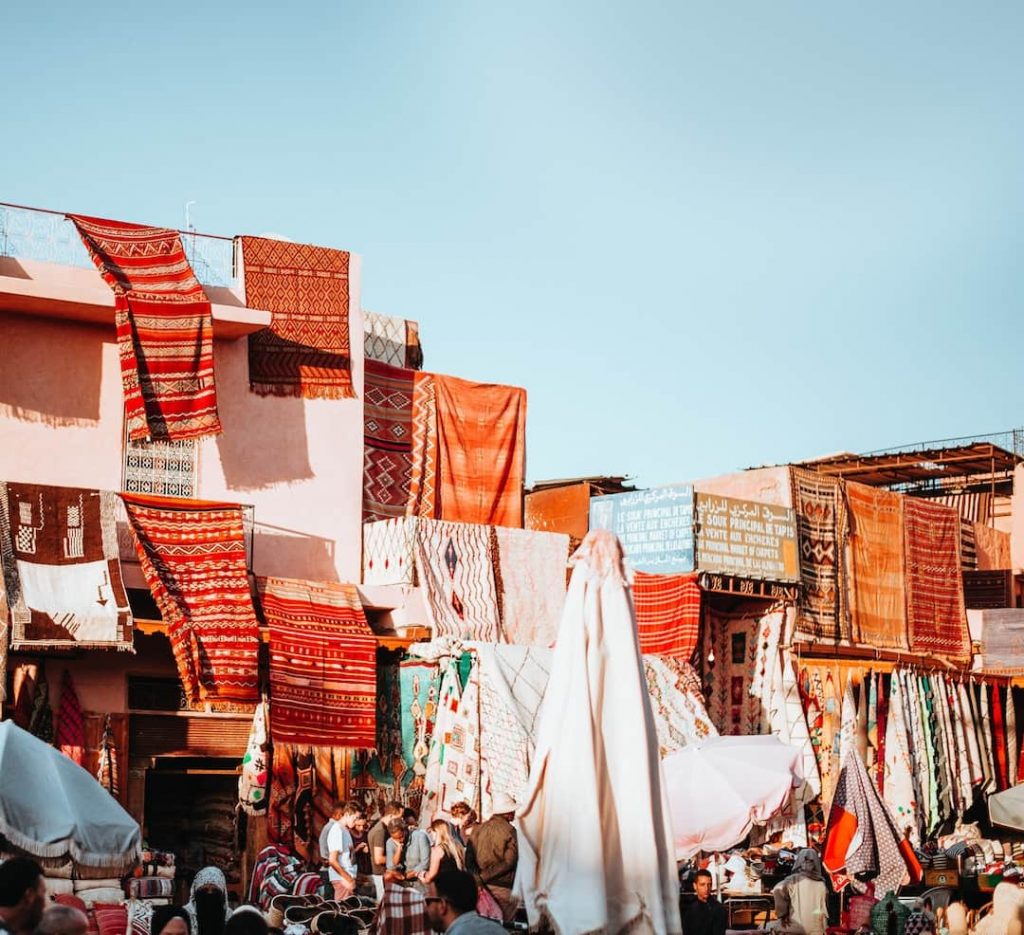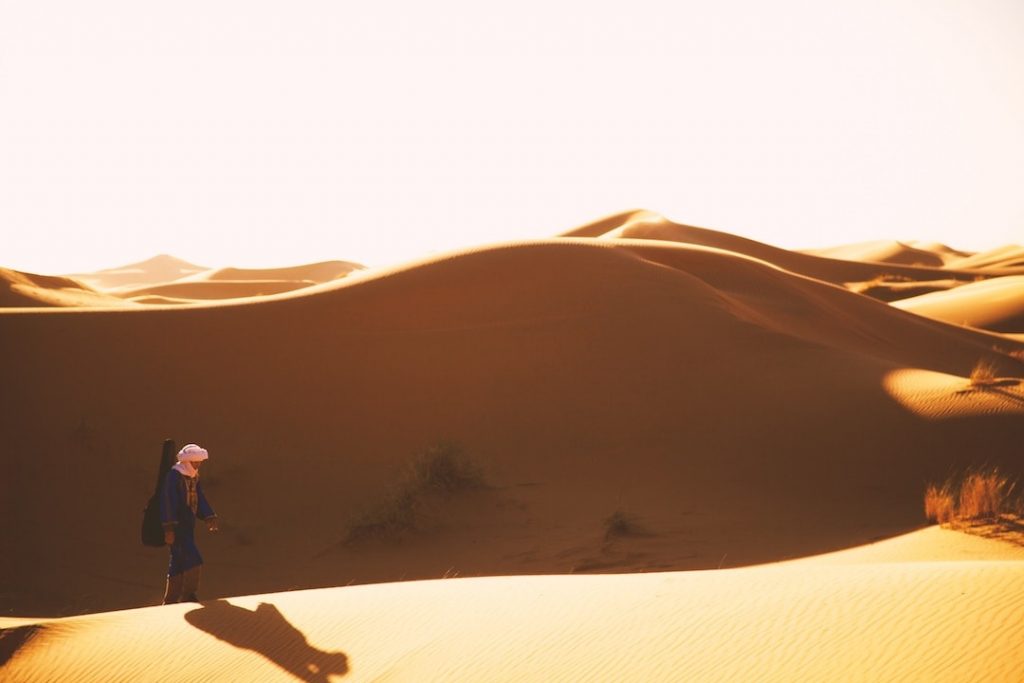Morocco is an unforgettable experience for the senses. This North African country’s tangle of textured alleys and a jumble of souks, riads, gardens, and royal palaces — light-dappled and splashed with the most vibrant of colours — are resplendent. Its markets are a trove of treats for your taste buds. The animated locals are some of the best people you’ll meet on your travels. And that simmering weather, brutal at first, is just the ticket to getting that golden glow you might have only previously seen on Victoria Secret models.
There’s little wonder why many have fallen in love with Morocco, and why it’s one of the most photographed travel destinations in the world. But before you jet off with your camera, here are some tips you might find useful.

Best time to visit Morocco
The heat might seem unbearable in the summer months, particularly from late June through August. However, with the right clothing and skin protection, you’ll do just fine in the cities, like Casablanca, Fes, and even Marrakech. Most of Morocco is a year-round destination as it never gets too cold there, but you might need a warm jacket and an umbrella in the winter months.
For more moderate weather, opt for spring and autumn, when the temperatures are most pleasant at 13°C to 22°C (the high 50s to low 70s). It’s certainly easier to deal with – especially if you’re lugging all that heavy camera gear around!
General tips for travelling in Morocco
Though Morocco is well-versed in the intricacies of tourism and getting around the country is quite easy, it’s still good to familiarise yourself with a few things. After all, arriving in this destination without knowing what to expect can cause quite a culture shock.
- Souk vendors can be aggressive in selling their wares, but don’t be put out by that. If you’re not interested, just smile, politely refuse, say thank you, and move on. If you let them get to you, you will feel harassed and not have a good time.
- Dress appropriately. While locals are used to tourists from Western countries showing more skin than the norm, it is still a Muslim country with a conservative way of dress. Light, breathable clothing that covers your shoulders and knees is best, whether you prefer dresses, skirts or pants.
- Anyone who has been to Morocco will tell you that many locals will try to make a fast buck off wide-eyed tourists. Be aware of your surroundings and don’t trust just anyone.
- Hire a reputable tour company for your exploration. Some unofficial guides will offer you their services, but you’re better off taking your business to a reliable and trustworthy company.
- Stay in a riad rather than a contemporary hotel; they’re often very affordable and offer breakfast for free. Best yet, you’ll get beautifully-decorated and very spacious suites.
- You will get lost in the Old Medinas as they are confusing. Don’t panic and take it in stride, and bring a map with you just to be safe. You will get out eventually, and you’ll never know what treasures you’ll stumble into!

Best places to photograph in Morocco
It’s impossible to put together a short list of the best places to photograph in Morocco and not leave anything out. That said, here are a few places you might start with.

The Sahara Desert
Is there anything more epic than a photo of camels trekking the sand dunes? Is there anything cooler than a shot of you in a traditional desert camp surrounded by colourful rugs and pouffes? Desert might mean barren, but there’s plenty of photo opportunities in this one.
Pro tip: Kick off your sandals and hike to the top of a sand dune with a wide-angle and a prime 85mm for both landscapes and portraits. Sunset offers the best light and most appealing shadows. Bring a tripod and a remote shutter, if you’re desert camping, so you can squeeze in a bit of night sky photography.

Old Medina
Whether you’re in Fes, Marrakech, Casablanca, or Tangier, the Old Medina (old quarter) is your best bet for gorgeous architecture, cool alleys, brightly-painted doors and walls, and the occasional local going about their business. Don’t be afraid to get lost, as there are plenty of snap-worthy scenes to be found.
Pro tip: A wide-angle lens is fitting, as many of the streets are narrow and you won’t have a lot of space to work with, but do bring your 35mm lens as well.

Chefchaouen
If you’re wondering where those famous Instagram photos of blue-painted streets were taken, wonder no more. They were taken in the backpacking haven of Chefchaouen, a small town in the Rif Mountains whose claim to fame includes its blue and white houses.
Pro tip: Don your best outfit and go for the quintessential selfies and travel portraits. But also look up, look down, look left and right. Architectural shots abound!

Fes El Bali
In Fes, the old labyrinthine part of the city is famous for its architectural wonders and very cool truly Moroccan scenes. The UNESCO Heritage Site is, after all, home to such landmarks as the Bab Bou Jeloud gate, the University of Al-Karaouine (the oldest university in the world!), and the Chouara leather tannery.
Pro tip: Both your wide-angle and standard zoom lens should do the trick. Keep an eye out for the occasional work donkey, as they make for adorable subjects. Use your smartphone for these quick snaps.
Jebel Toubkal
If you’re more of an adventure photographer, you’ll find your bliss climbing and photograph the highest peak in North Africa. This Atlas Mountains peak is good for a three-day adventure, and with several companies organising a trekking tour, it’s an easy endeavour. At the top are spectacular landscape scenes you wouldn’t want to miss.
Pro tip: While a wide-angle lens might be the obvious choice, you’re going to want to bring your telephoto. If you prefer to travel light while hiking, find a 24-240mm lens with excellent image performance. You might regret not bringing a tripod with you.
Tangier, Casablanca and Essaouira
Visiting the coastal and harbour cities of Morocco is a must, especially in the warmer months. Not only are there a plethora of scenic seaside shots to be had, but you’re also not too far away from the water for a refreshing swim. Additionally, these cities have their share of beautiful architecture worth documenting.
Pro tip: Watersports are the typical pastimes, so having your fastest sports lens might be useful. If you’re planning on participating yourself, pack your GoPro and your chest mount. Setting your GoPro to video or interval shooting is most convenient.

Aït Benhaddou
If the mud-brick, Atlas Mountains village of Aït Benhaddou looks familiar, it’s highly likely that you’re recognising it from a movie. It’s a popular shooting location for good reason, looking little changed from its caravan stop days, and visiting it feels like a trip back in time.
Pro tip: The best place to photograph it is from the outside where you can see the stacking of its clay structures. The kasbah serves as a fabulous portrait background as well.

Ben Youssef Madrasa
The former Islamic college in Marrakech is now an Instagram-famous spot, and it’s not hard to see why. This madrasa boasts intricately carved stucco walls and vaults, colourful tilework, and ornate doors and arches, making it a paradise for photographers and IG addicts.
Pro tip: Come early to beat the crowds. Your smartphone should be good for selfies and snapshots, but to really capture the stunning details, a full-frame camera is definitely ideal.
Essential camera gear
Street and architecture photography reign supreme in Morocco, as do portraits. There are also the occasional landscape shots, especially in the desert and along the coasts, but mostly, you’ll be spending your time taking photos of the buildings, souks, alleys and people. Considering this, a full-frame camera, preferably a mirrorless one so it’s less bulky, is ace, with your smartphone as a backup for quick and less important snaps. The Sony a7r III is an incredible full-frame mirrorless option, with its natural colour rendition, fast autofocus, and excellent dynamic range.
If you prefer to travel light, a standard zoom lens (24-70mm) will get you through most situations. If you’re used to carrying a heavier load whilst exploring, consider packing a wide-angle, a portrait prime, and a telephoto. Since the light might be harsh, an ND filter will prove useful. To give all those colours a pop, a polarizer might come in handy. And of course, for night time photography and low-light situations, a tripod coupled with a remote shutter is needed.
What are your best photography tips when you’re exploring a new country? Did we miss any must-see spots in Morocco? Let us know in the comments!


